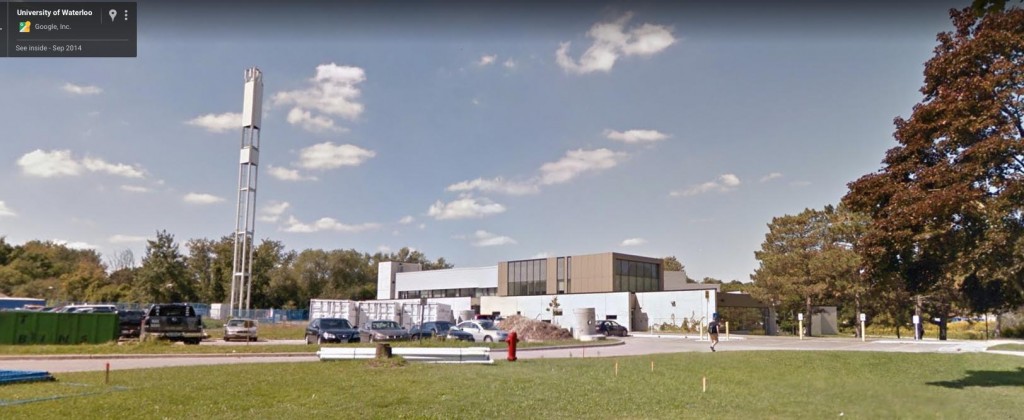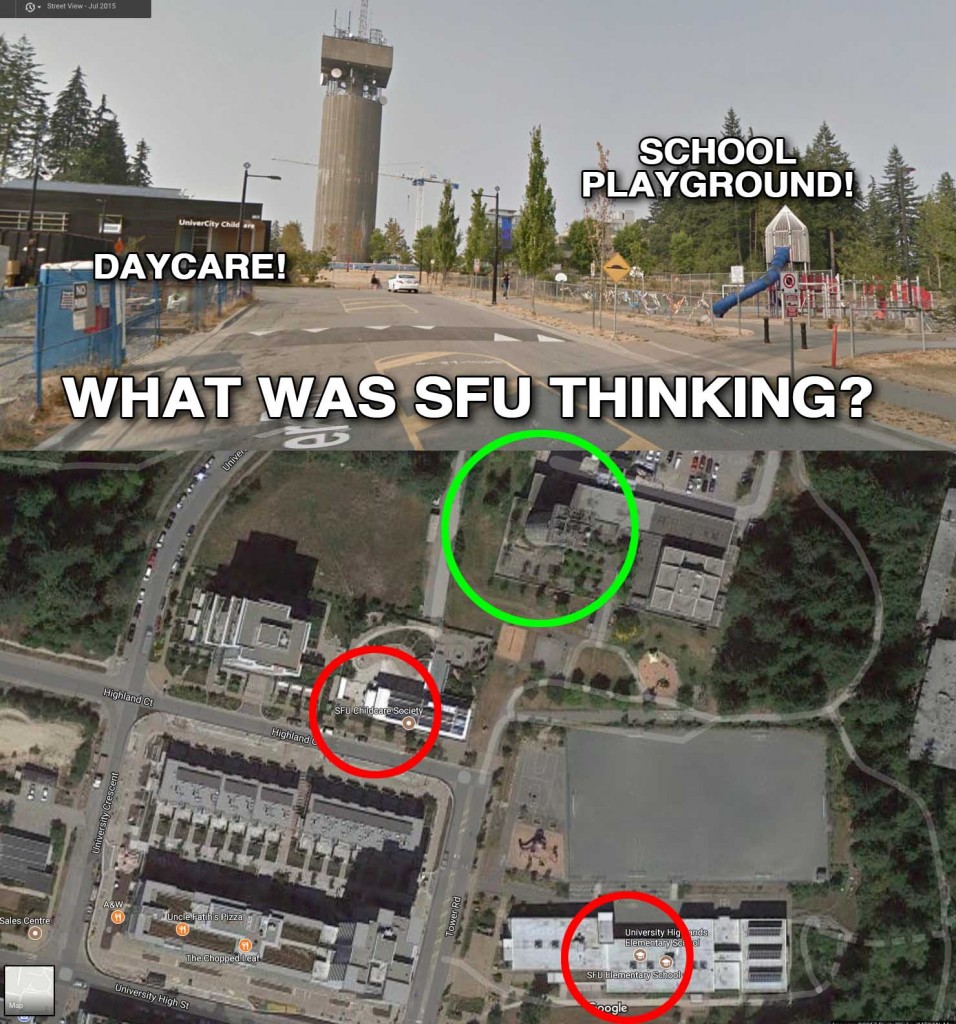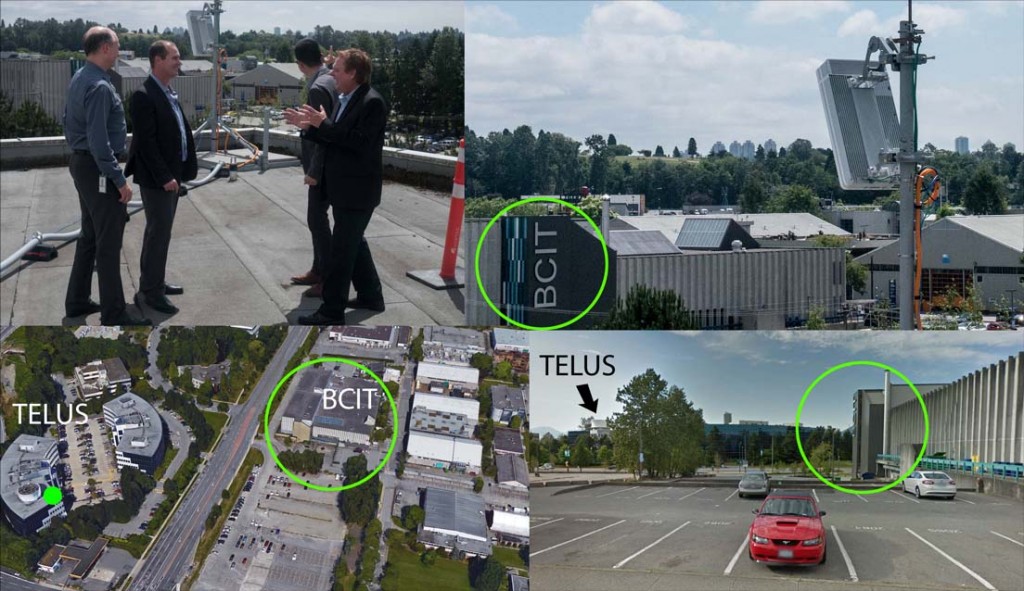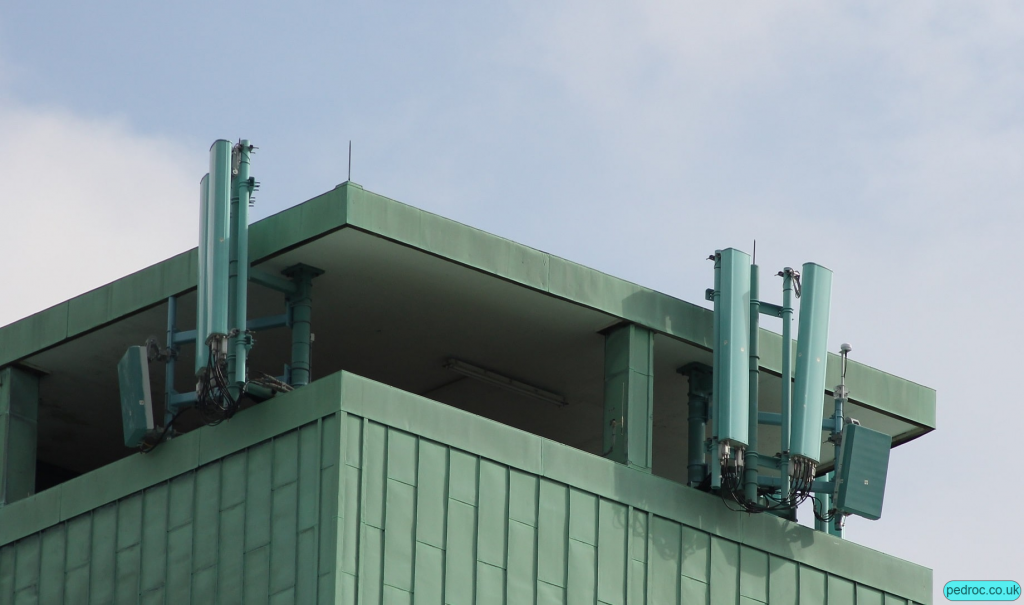Brain Cancer and Suicides have increased on
University Campuses in both Canada and the United States.
Were wireless networks the cause?
••••••••••••••••••••••••••••••••••••••••••••••••••••••••••••••••••••••••••••••••••••••••••••••••••••••••••••••••••••••••••••••••
University of Waterloo
SUICIDE RATE : INCREASED
WIFI NETWORK :
CELL TOWERS : INCREASED
References :
macleans.ca/mental-health-crisis-on-campus/
A Death on Campus
In the wake of student suicides, universities are reflecting on how to respond, and on their approaches to dealing with mental health.
Campus Crisis CTV W5 – https://www.ctvnews.ca/w5/campus-crisis-why-are-suicide-rates-rising-among-university-students-1.1463654
••••••••••••••••••••••••••••••••••••••••••••••••••••••••••••••••••••••••••••••••••••••••••••••••••••••••••••••••••••••••••••••••
Simon Fraser University –
SUICIDE RATE :
WIFI NETWORK :
CELL TOWERS :
References : One employee reported EHS from working there, One employee at BC Hydro building (beneath the Antenna) had a Brain Tumour
••••••••••••••••••••••••••••••••••••••••••••••••••••••••••••••••••••••••••••••••••••••••••••••••••••••••••••••••••••••••••••••••
Queens University
SUICIDE RATE :
WIFI NETWORK :
CELL TOWERS :
References :
A Death on Campus
In the wake of student suicides, universities are reflecting on how to respond, and on their approaches to dealing with mental health.
Student Death Protocol – Queen’s University
••••••••••••••••••••••••••••••••••••••••••••••••••••••••••••••••••••••••••••••••••••••••••••••••••••••••••••••••••••••••••••••••
BCIT
SUICIDE RATE :
WIFI NETWORK :
CELL TOWERS : Telus tests 5G at BCIT (2018)
References :
-
Taboo no more — BCIT starts a conversation about suicide – BCIT …
https://commons.bcit.ca/news/2016/09/taboo-no-more..27 Sep 2016 … Mental health, and specifically suicide, can be difficult to talk about. BCIT counsellor, Judy Bushnell, hopes to change that. “I think there is a …
-
BCIT : : Counselling & Student Development : : After Hours and …
https://www.bcit.ca/counselling/afterhours.shtml
-
BCIT : : Counselling & Student Development : : Workshops for …
https://www.bcit.ca/counselling/facultystaff/fswor…
-
identifying and referring students in difficulty – BCIT
https://www.bcit.ca/files/counselling/pdf/identify..
-
QPR | BCIT FSA
Suicide Prevention: You can save a life!
••••••••••••••••••••••••••••••••••••••••••••••••••••••••••••••••••••••••••••••••••••••••••••••••••••••••••••••••••••••••••••••••
University of British Columbia
SUICIDE RATE :
WIFI NETWORK :
CELL TOWERS : 5G TEST SITE for ROGERS 2018-2019
References : https://students.ubc.ca/health-wellness/self-help/suicide-prevention
From UBC to dropout: Why mental health matters for students
••••••••••••••••••••••••••••••••••••••••••••••••••••••••••••••••••••••••••••••••••••••••••••••••••••••••••••••••••••••••••••••••
University of Victoria
SUICIDE RATE :
WIFI NETWORK :
CELL TOWERS : Many at the Stadium
References :
••••••••••••••••••••••••••••••••••••••••••••••••••••••••••••••••••••••••••••••••••••••••••••••••••••••••••••••••••••••••••••••••
Trinity Western University
SUICIDE RATE :
WIFI NETWORK :
CELL TOWERS : Beside TWU Residents
References :
••••••••••••••••••••••••••••••••••••••••••••••••••••••••••••••••••••••••••••••••••••••••••••••••••••••••••••••••••••••••••••••••
San Diego State University
SUICIDE RATE :
WIFI NETWORK :
CELL TOWERS : YES
References : http://go.sdsu.edu/student_affairs/cps/suicide.aspx
San Diego State University (SDSU) has Cancer Cluster in Nastier Hall – RENSE ( 2008 ) & AHCJ ( March 2009 )
••••••••••••••••••••••••••••••••••••••••••••••••••••••••••••••••••••••••••••••••••••••••••••••••••••••••••••••••••••••••••••••••
California State University
SUICIDE RATE :
WIFI NETWORK :
CELL TOWERS : YES
References : http://go.sdsu.edu/student_affairs/cps/suicide.aspx
https://caps.ucsd.edu/smhi.html?_ga=2.167745342.1012847001.1532253082-496637891.1532253082
1. In 2006 17 people around a mobile phone tower in Norfolk County in the US reported symptoms of microwave sickness – including headaches, fatigue, nausea and dizziness since the installation of the tower. The tower was removed.[ii]
2. An unusual cancer cluster was found at a California student residence among young peo- ple, and the conclusion was that a nearby cell tower was the cause. see http://mieuxprevenir.blogspot.ca/2012/11/san-diego-state-university-brain-cancer.html
San Diego, CA – University of California has Cancer Cluster in the Literature Building – NY TIMES ( 2009 )
Investigating Suspected Cancer Clusters and Responding to Community Concerns:
Guidelines from CDC and the Council of State and Territorial Epidemiologists
Recommendations and Reports
September 27, 2013 / 62(RR08);1-14
https://www.cdc.gov/mmwr/preview/mmwrhtml/rr6208a1.htm
Bristol University Dodge Safety Questions and Mislead about 5G – Has Testing Increased Suicides?
We decided to ask Bristol University about their 5G experiments and how safe the students are from exposure due to the massive increase of suicides there since 2015 when the testing began. The answers from the FOI that was sent to Bristol university is patchy as to whether informed consent being attained by students and members of the public who are involved in the trials or are innocent bystanders of the 5G military grade transmissions that Bristol University is testing. Apparently, ‘post grads’ choose to participate meaning that undergraduates cannot be involved? This is not true, as if you look at any part of Bristol’s 5G ‘Smart Internet Lab’ microsite, it illustrates quite clearly the level of participation from unaware students and members of the public. Also, Bristol university states:
“The antennas used for transmission are within the test labs. There are no permanent installations of 5G research hardware and no hardware is currently on test.”
This statement is intended to be utterly misleading. There are a whole host of videos that have been uploaded by Bristol University that clearly show cars being driven around the campus using 5G and other huge 5G trials exposing unwitting students and general public to what could be dangerous even deadly levels of 5G RF. Seriously – How can 5G experiments be conducted in Public and on Campus without the informed consent of all those being exposed is given? Bristol University are regularly breaking the Nuremberg Code and they have filmed themselves doing it. Bristol’s 5G scientists are either ignoring the safety of the Public and themselves or they really do not know except for their own experiences whether or not 5G is safe. When British and American soldier suicides are increasing by the year since they’ve been using these 5G frequencies, I wonder if MOD sold off these frequencies to Telecoms companies because suicide and death was too high?
The University state they are using, ‘CE marked test and measurement equipment for our experiments that’s tested and certified for relevant UK and EU standards and specific health and safety risk assessments’, but they didn’t go into detail what these standards are. If we go by ICNIRP, the levels I’m assuming they are operating within from watching their promotional 5G videos, it’s WAY LONGER THAN 6 MINUTES, meaning they’re breaking the insanely modest International Standards. We know from watching Live Blood Analysis videosthat it’s clear how much EMF and RF exposure destroys healthy blood within 2 minutes making it clump together, which is also seen in this Live Blood video on the effects of Smart Meters. Bristol’s 5G lab is using guidelines for EMF and RF protection that is horrendously outdated i.e. assessing damage caused by a fire based solely on how hot it feels and not looking at underlying DNA and cell damage, which there is plenty of proof of within Smombie Gate’s archives. The official negative health effects of 5G seem to be ignored under the guide of it being an ‘experimental technology’. Where does Bristol University’s duty of care come into play or have they signed off all students as live guinea pigs?
We believe the next step in the evolution of Legislation will have to be recognising that all Humans are on a sensitivity range for EMF and RF, some are fine, whilst others literally go insane and commit suicide because they hear voices in their heads – Yes, it’s proven that EMF and RF can produce these effects in the Human brain.
Closer to Bristol, Plymouth Live reported: The Cornish group Villagers Against Masts (VAM) call for greater scrutiny of mobile phone technology and coverage, citing serious concerns over health risks including mental health. Jane Harvey, founding member of VAM, says she has deep concerns about the amount of masts needed for 5G network. She said:
“Since researching the health effects, I have a real concern over masts, but also Wi-Fi and the looming 5g technology. Unfortunately Cornwall and Cumbria have been chosen to trial 5g in rural areas. Also, once they get permission for one mast on an AONB, a precedent is set and it would be very tricky to stop more. 5g is a weapons grade frequency. There is no knowing the future implications for us – we are the guinea pigs. Jane cites a spate of suicides at Bristol University. Over the last year or so, they have had an unprecedented number of students committing suicide.”
It seems that only when mass 5G illegal Human experiments have been conducted that people Hell-bent on making money who are pushing agendas for control and surveillance may stop and listen in places like China and the USA, but we really believe there’s a fighting chance in the UK and Europe to STOP 5G before it starts. We cannot help but speculate that the increase of suicides at Bristol University are in-line with Biological effects from exposure to electromagnetic radiation emitted by cell tower base stations and other antenna arrays.
12 Bristol University students either found dead or committed suicide since 2016:
- Miranda Williams, 19. Philosophy student found dead in Bristol Royal Infirmary on October 13, 2016, three weeks after the start of term.
- Daniel Green, 18. The fresher, studying history, was found dead in his room in university halls of residence on October 21, 2016.
- Kim Long, 18. Was in the first term of his law degree when he died at his halls of residence on November 10, 2016.
- Lara Nosiru, 23. Neuroscience student found dead in the Avon Gorge on January 30, 2017. Inquest ruled she took her own life.
- Elsa Scaburri, 21. Third-year languages student was found dead near her Wiltshire home on March 20, 2017. Verdict: Suicide.
- James Thomson, 20. Second-year maths student was found dead in his room on October 25, 2017. Verdict: Suicide.
- Justin Cheng The University of Bristol confirmed that Cheng, from Canada, had been found dead away from Bristol on the evening of 12 January 2018.
- Omojola Ogundipe, 20, was in the second year of an economics undergraduate degree at Bristol University. 14 March 2018.
- Alex Elsmore, 23. The electrical and engineering student was found dead on April 21, 2018, near Clifton Suspension Bridge.
- Natasha Abrahart, 20. Second-year physics student died on April 30 2018. She was found dead in her flat in Bristol.
- Ben Murray. Was in the first year of an English degree when he died “suddenly and unexpectedly” on May 5 2018.
- Bertram Crawford, a second-year English student at the University of Bristol, committed suicide on 17th November 2018.
Here’s the FOI in all its glory:
Freedom of Information Request (our reference FOI18-541)
We refer to your Freedom of Information request dated 22 November 2018. We apologise for the delay in responding to your request. We are currently short-staffed and have a backlog of requests that we are working through as quickly as we can.
University’s Response
You requested information regarding testing of 5G technology by the University of Bristol. Further to Section 1 of the Freedom of Information Act 2000 (the “Act”) we confirm that the information requested is held by the University of Bristol (the “University”).
The University’s Smart Internet Lab has provided the following response:
Current defined frequencies from OFOM and 5G specifications are 3.5GHz, 26GHz/28GHz bands.
- When did you start testing 5G on campus?
From 2015 research addressing candidate technologies has been ongoing, but not product testing.
- What types of antennas, masts and arrays are you using in experiments and on Campus (include specifications)?
For sub 6GHz Massive MIMO 0.5λ linear array of sleeve dipoles and 32 x 4 patch antenna array. For millimetre wave Flann horn antenna.
- Do students have the choice of being exposed to the 5G tests?
Yes, postgraduate students can choose to actively participate in 5G research. See also answer to Q6.
- How often are the 5G and wavelength tests?
Several measurements per month.
- What wavelength RF spectrums do your experiments operate at and historically when have they been broadcast?
3.51GHz and 24.25 to 27.5GHz. See answer to Q4 regarding when the tests are conducted.
- Have you done any health impact assessments or observations?
University operates under health and safety at work procedures with associated risk assessment. All research activities are carried out by appropriately trained staff, within their respective laboratories or in the University’s anechoic chamber.
A full risk assessment is undertaken by those engaged in the measurements, addressing risks to themselves and others who may be nearby. These risk assessments are approved in accordance with University health and safety processes.
- Have you any health and safety guidelines you’re following?
See answer to Q6.
- What standards and guidelines are you operating within for the 5G hardware, antennas, arrays and masts?
We operate CE marked test and measurement equipment for our experiments. All the equipment is tested and certified for relevant UK and EU standards.
- Have you asked students for releases forms or their full informed consent to be tested on with 5G and other wavelengths?
See answers to Q3 and Q6.
- I’d like to see a Birdseye plan of the University and where the antennas, arrays and masts are situated, please include a key for all the departments shown on the map/plan.
The antennas used for transmission are within the test labs. There are no permanent installations of 5G research hardware and no hardware is currently on test.
source : https://smombiegate.org/bristol-university-dodge-safety-questions-and-mislead-about-5g-has-testing-increased-suicides/
https://smombiegate.org/bristol-university-dodge-safety-questions-and-mislead-about-5g-has-testing-increased-suicides/
Three Universities to develop £16m 5G test network
New network will link universities to test cutting-edge 5G technology
Published 6 July 2017
First step in plan to make UK a leader in sector which could add up to £173bn to the economy
Includes plans to deliver end-to-end 5G trial in early 2018
A world-class 5G technology test network will aim to put Britain at the forefront of the next wave of mobile technology – potentially adding up to £173 billion to the economy by 2030.
Experts from leading 5G research institutions at King’s College London, Universities of Surrey and Bristol, will be awarded £16m to develop the cutting-edge 5G test network which will see academic expertise and commercial leadership brought together to trial the technology and make sure people and businesses can enjoy the benefits sooner.
5G is expected to deliver reliable ultrafast mobile connectivity with the ability to process huge amounts of data and support complex applications predicted for tomorrow’s mobile phones – for example, sending virtual reality 3D TV clips to mobile devices.
It could also be used in new technologies that have the potential to revolutionise society such as autonomous vehicles – for example, to make sure they can be used safely on our roads – or in advanced manufacturing and robotics, augmented reality, remote surgery, smart agriculture and in smart homes and cities.
Minister for Digital Matt Hancock said:
We want to be at the head of the field in 5G. This funding will support the pioneering research needed to ensure we can harness the potential of this technology to spark innovation, create new jobs and boost the economy.
We know 5G has the potential to bring more reliable, ultrafast mobile connectivity, with quicker reaction times and larger data capabilities, and I’m thrilled to announce King’s College London and the universities of Surrey and Bristol have agreed to collaborate on this project.
This test network will trial and demonstrate the next generation of mobile technology and is the first part of a four-year programme of investment and collaboration in the Government’s new 5G Testbeds and Trials programme.
The universities will work together to create three small-scale mobile networks which together will form the test network. Each network will have a number of the elements expected in a commercial 5G network – including mobile signal receivers and transmitters and the technology to handle 5G signals – to support trials of its many potential uses.
The project will build on existing research and help to make the case for timely deployment of 5G in the UK. It will help make sure the country is ready to capitalise on a potentially huge global market for 5G products and services and create opportunities for British business to grow at home and abroad. It will also mark the first steps towards developing a new national 5G Innovation Network.
This investment is also aiming to deliver a 5G end-to-end trial in early 2018. This could be, for example, a trial in which a signal is sent from a mobile device, such as a phone or in a car, to a data centre and back again. This will test the capability of 5G to make an application or service work in a real-world environment.
Surrey, Bristol and King’s are internationally renowned for their work on 5G and specialise in different aspects of the technology. The project will combine their strengths.
Rahim Tafazolli, University of Surrey’s 5G Innovation Centre director, is the project lead and will be working with Dimitra Simeonidou from the University of Bristol and Mischa Dohler from King’s College London to deliver the project. He said:
The University of Surrey’s 5GIC, University of Bristol and King’s College London are delighted to be delivering this initial project as part of the Government’s new 5G Testbeds and Trials Programme. This investment will ensure that the UK continues to be world-class in 5G innovation and development through to commercial exploitation.
This exciting programme builds on significant investment and a strong foundation of 5G research and development across the three institutions. The programme will maintain and extend the UK’s leadership position in the race to transform many aspects of everyday life and business through digital transformation.
Exchequer Secretary to the Treasury, Andrew Jones MP, said:
Ensuring Britain remains at the forefront of digital innovation is a priority for this government.
We are investing £740 million from the National Productivity Investment Fund to boost the country’s digital infrastructure, and today’s announcement will help provide people and businesses with the next generation of connections.
A better connected Britain will make us a more productive country and improve living standards.
Other academic institutions, industry and local authorities will also be able to bid for further funding to be part of this programme from 2018/19 onwards. Further details on opportunities and the funding available will be published later this year.
A new centre of 5G expertise has also been created in the Department for Digital, Culture, Media and Sport to drive forward this work.
At Autumn Statement 2016, the Government first announced its intention to invest in a nationally coordinated programme of 5G Testbeds & Trials, as part of a £1bn package of announcements made to boost the UK’s digital infrastructure.
Of this funding, £740m from the National Productivity Investment Fund (NPIF), will spent on two new programmes: the Local Full Fibre Networks Programme and a new programme of coordinated 5G testbeds and trials. These programmes will help to de liver next generation mobile services and full-fibre broadband networks.
The Government’s 5G Strategy set out the first steps to make the UK a world leader in the mobile technology and included a pledge to develop a 5G testing facility.
The aim of the 5G Testbeds & Trials Programme is to make the UK an attractive place to test 5G applications and services, helping to ensure the UK secures an ‘early mover advantage’ in the development of new 5G applications and services and to support the timely deployment of 5G networks.
5G’s full economic impact is difficult to predict at this early stage but there is emerging consensus that one of the main benefits will be in enabling new applications in a number of different sectors.
For example, the GSMA estimates that the contribution of mobile to the global economy will be worth USD$3.9 trillion in 2020, of which over 75% will be benefits to the wider economy that are enabled by mobile.
Other recent reports have illustrated the potential gains from 5G. In particular: the Future Connectivity Challenge Group report suggests that UK leadership in 5G could result in the opportunity to create £173 billion of incremental UK GDP growth over a ten year period from 2020 to 2030; and
IHS Economics / IHS Technology estimated by modelling industry investment and impacts on total factor productivity from expected use cases that 5G will enable USD$12.3 trillion of global economic output in 2035.
https://www.gov.uk/government/news/three-universities-to-develop-16m-5g-test-network






